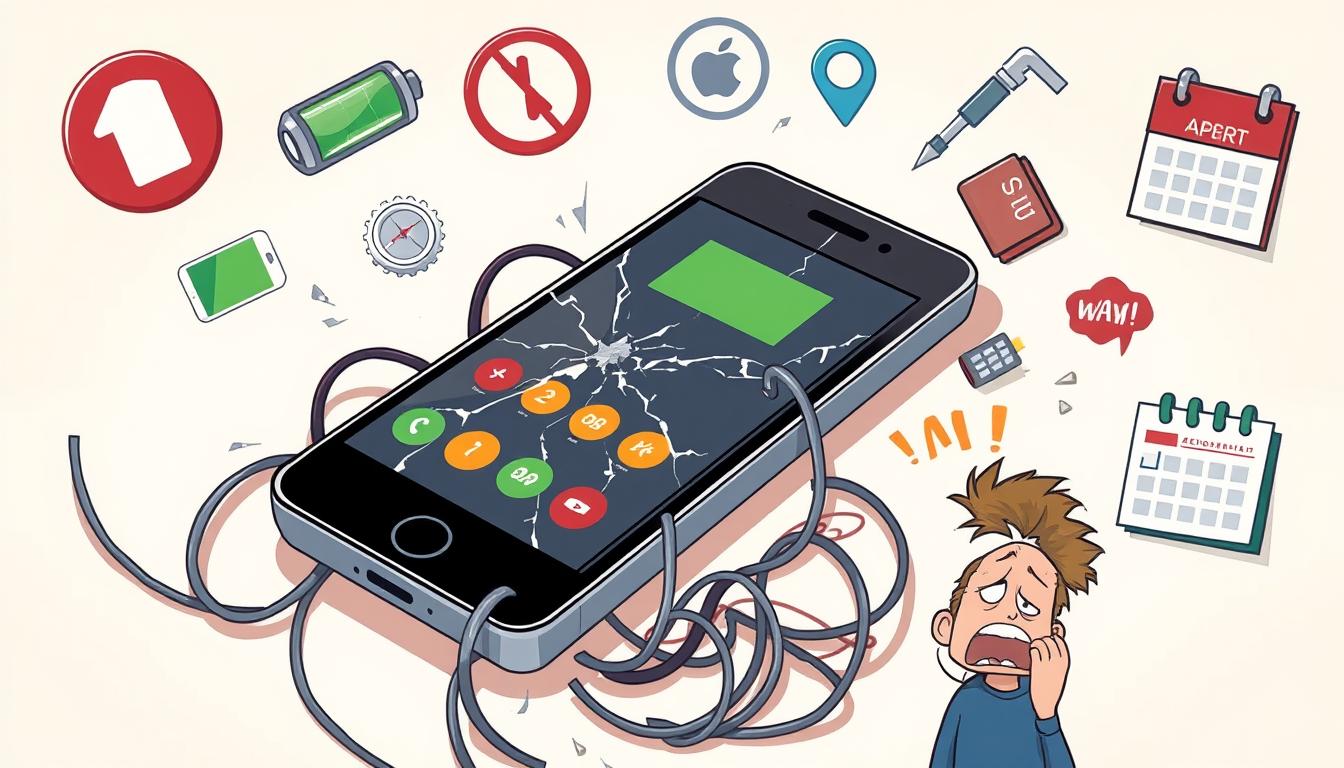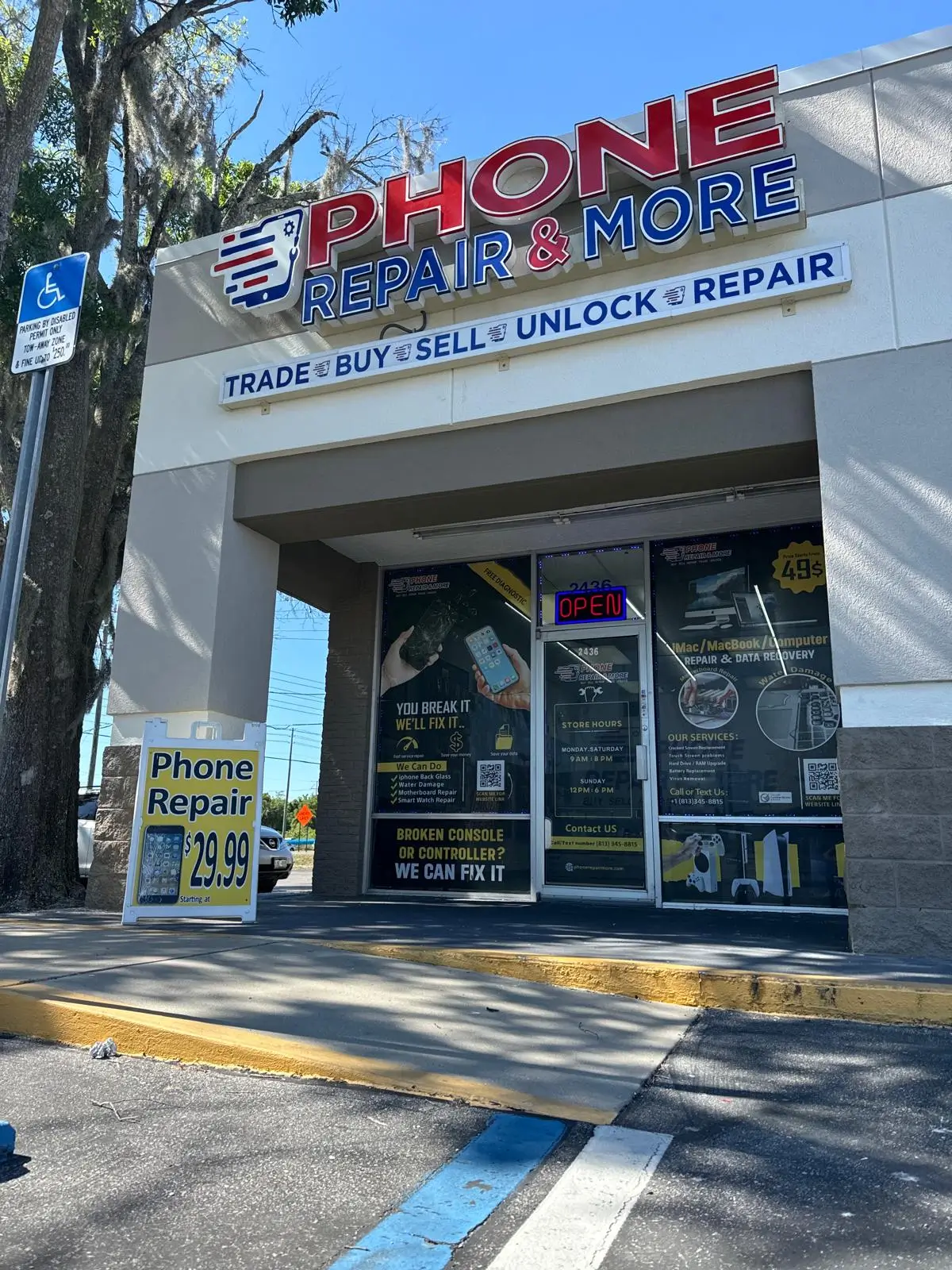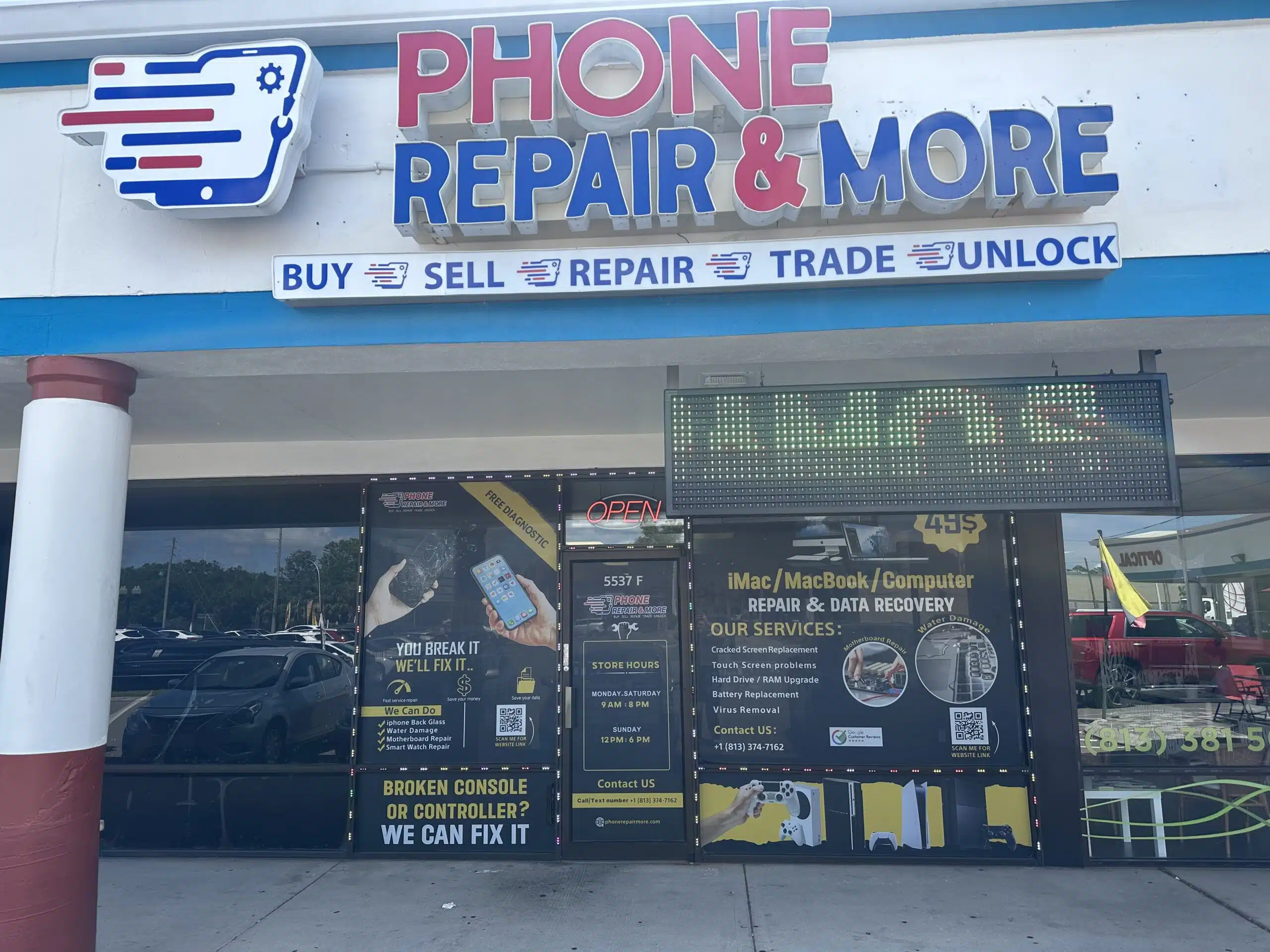Ever thought, “When should I replace my phone?” In today’s fast-changing tech world, figuring out when to upgrade can be tough. Smartphones last 5 to 7 years, but issues like slow performance or outdated software might mean it’s time for a new one. Spotting these signs can make your phone last longer and improve how you use it.
As your phone gets older, it might not hold a charge as well, or it could get damaged. Keeping an eye on these signs is key to keeping your phone running smoothly. If fixing your phone becomes too expensive, places like Phone Repair & More can help decide if you should repair or replace it. This guide will show you how to spot these signs and make the right choice for your phone.
Key Takeaways
- Know how to recognize performance issues and physical damage.
- Monitor your phone’s battery health for signs of decline.
- Understand the importance of software updates for security.
- Evaluate connectivity problems as potential red flags.
- Consider repair vs. replacement based on cost effectiveness.
Understanding The Lifespan Of Smartphones
Smartphones can last from two to three years on average in the United States. Some, especially those well cared for, might go up to five years. People often wonder, how long should a smartphone last? The answer varies based on how you use it, how well you take care of it, and its features.
Average Lifespan Expectations
Studies show that a smartphone can last almost five years with the right care. Many things affect how long a phone lasts. Owners should think about their phone use. Important signs of a phone’s long life include:
- Charging cycles, as most device batteries are designed to function optimally for between 300 to 500 charges.
- Regular heavy recharging can significantly reduce battery durability.
- High-end devices typically receive software updates for at least three years, adding to their lifespan.
Factors Affecting Longevity
Several key factors affect how long a smartphone lasts. These include:
- Device Maintenance: Regular cleaning and use of protective cases can prevent damage.
- Charging Habits: Avoiding constant recharge to 100% improves battery health.
- Software Support: Mid-range smartphones often receive less software support, leading to an earlier obsolescence.
Older smartphones might also have trouble with accessories because of design changes in newer models. Getting protective accessories, like a case, can help protect your phone’s screen. This is the most likely part to get damaged. Knowing these factors helps you make choices that can extend your phone’s life.
Performance Issues To Watch For
Smartphones can slow down, making daily tasks hard. This is often due to not enough storage, old software, or weak processing. Keeping an eye on these issues helps decide if you need repairs or a new phone.
Slowdowns In Speed And Responsiveness
Phone slowdowns can happen for many reasons. Not enough storage is a big one. When storage is full, finding files becomes hard, slowing things down. Old operating systems also slow things down and cause app problems.
Frequent Crashes And Freezes
Crashes and freezes are big signs of trouble. If apps keep crashing, it’s time to look into it. Old systems make phones less reliable. You might need repairs or a new phone to fix these problems.
https://www.youtube.com/watch?v=-PLOWRNm2dY&pp=ygUXI2RldmljZXBlcmZvcm1hbmNlYm9vc3Q%3D
| Issue | Potential Causes | Recommended Solutions |
|---|---|---|
| Phone Slowdowns | Low storage, outdated software | Clear storage, update software |
| Apps Crashing | Compatibility issues, insufficient processing power | Check for updates, restart the phone |
| Frequent Freezes | Overloaded RAM, outdated systems | Limit background processes, factory reset |
Diminishing Battery Life
The battery life of a smartphone is key to its performance and user experience. If the battery life is going down, it might be time for a new battery. Keeping an eye on the battery’s health helps spot when problems start.
How To Assess Battery Health
Checking battery health is important to see how well a phone holds its charge. Most phones have built-in tools to check battery performance. For example, iOS users can find detailed battery info in the settings menu.
Apps like AccuBattery or Battery Tools & Widget also offer insights on battery usage. This lets users track how efficient their battery is. Modern phones should still hold a lot of charge after a lot of use.
Signs It’s Time For A Replacement
Signs of battery trouble include fast draining, unexpected shutdowns, and longer charging times. These signs mean the battery might be wearing out. If your phone needs to be charged often or can’t hold a charge, it’s time to think about replacing it.
The average battery lasts about two years. If it loses a lot of capacity, getting a new phone might be cheaper than fixing it.
Knowing when your battery is failing and when to replace your phone can make your device last longer and work better. Check out this article for more on when it’s time for a new phone.
Outdated Features And Software
Smartphones keep getting better, but some devices can’t keep up. They have old features and software that don’t meet today’s standards. Users often wait almost three years to get a new phone. Knowing how important updates are helps keep your phone running smoothly and safely.
Devices without regular updates are at risk of security threats. This is because they can’t protect themselves against new dangers.
The Importance Of Software Updates
Updates make your phone run better and last longer. An old operating system can make your phone slow and weak. It can even let hackers in.
Studies show phones can become outdated in just three years. This affects how well they work. Getting updates from your phone’s maker helps keep it running well with new apps.
Compatibility With New Apps
New apps need the latest operating systems to work right. Older phones might not be able to run them well. This limits what you can do with your phone.
Having a phone that supports new apps is important. It makes your phone more useful and valuable over time.
Physical Damage And Wear
Smartphones can wear out over time, affecting how well they work. Users face different types of damage, each with its own set of problems. Knowing when to fix these issues can help your phone last longer.
Cracks And Breaks: When To Worry
Cracks or breaks on screens are a big worry. About 75% of phones get damaged screens, which can mess up touchscreens. If you ignore these problems, they can get worse, letting dust and water in.
Water Damage Concerns
Water damage is a big threat to phones. About 60% of phones show signs of water damage, which can cause them to fail. If your phone gets wet, you need to act fast to fix it. Sometimes, it’s better to replace a damaged phone than to try to fix it.
Increased Repair Costs
As smartphones get older, fixing them becomes more expensive. Problems like a broken screen or a dead battery can add up. Users then face a tough choice: should they fix it or get a new one?
Evaluating Repair Vs. Replacement
At first, fixing an old phone might seem cheaper. But costs can quickly add up. Simple fixes, like a new battery or screen, cost between $70 to $300. Older phones are often cheaper to repair than newer ones.
But, after three repairs, it might be time to get a new phone. This is especially true if the phone can’t handle new software.
When a phone is being fixed, it’s out of use for a while. This can take a few hours or even days. If you can get a discount on a new phone, it might be the better deal.
Common Repair Issues
Screen cracks are a big problem, affecting about 50% of phone users. Fixing a cracked screen can cost between $70 to $400. For example, fixing an Apple iPhone screen can cost between $129 and $329. Samsung Galaxy repairs can range from $79 to $599.
It’s a good idea to talk to local repair shops. They can help you figure out if fixing your phone is worth it or if you should get a new one.

Connectivity Problems
Having trouble with your smartphone’s connection can be really frustrating. It might mean your phone is getting old and not working as well as it used to. You might face issues with Wi-Fi, mobile data, or Bluetooth. These problems can be caused by outdated technology or software that can’t keep up.
Issues With Wi-Fi And Mobile Data
Wi-Fi problems can come from many sources. This includes issues with your network, wrong settings on your device, or interference from your surroundings. Signs that your Android device is having trouble connecting include:
- Weak signal bars or data indicators
- Inability to use data tethering or hotspot functionality
- Intermittent network connectivity
To fix these issues, you can try a few things:
- Restarting your device to refresh its connection.
- Toggling Airplane mode on and off to reset network settings.
- Removing and reinserting the SIM card to resolve mobile network issues.
Keeping your device’s software up to date is key for good network connection. Updates can fix bugs that cause problems. Also, watching your mobile data usage can help avoid going over limits and losing connection.
Bluetooth Malfunctions
Bluetooth problems can also mess with your connection. They might be due to old software or wrong settings. To solve these issues, you can try a few simple steps:
- Checking and updating Bluetooth settings.
- Ensuring paired devices are within adequate range.
- Restarting the Bluetooth function when experiencing slow connections.
If you can’t fix your mobile data or Bluetooth issues, it might be time for a new phone. Ongoing problems often mean you need a device that can handle today’s demands better. Getting help from experts can also help figure out if hardware problems need fixing.
| Issue Type | Common Symptoms | Potential Solutions |
|---|---|---|
| Wi-Fi Problems | Weak signals, disconnections | Restart device, reset router, software update |
| Mobile Data Issues | Inability to connect, data tethering failures | Restart device, check provider settings, monitor usage |
| Bluetooth Malfunctions | Poor connection quality, failures to pair | Restart Bluetooth, ensure proximity, update settings |
Security Concerns
Smartphone security is a big deal because old devices can put users at risk. Many people use their phones for work and personal stuff. It’s key to know the risks and how to stay safe.
Manufacturers keep updating software to fix bugs. But, if you don’t update, you might get hacked or lose your data.
Risks Of Using Outdated Phones
Old phones can be very risky. For example, Apple’s iPhones get updates for up to seven years. Google’s Pixel phones get updates for three years. Samsung and Fairphone offer updates for four and ten years, respectively.
Missing these updates makes your phone an easy target for hackers. It’s important to keep your phone updated to protect your data.
Recognizing Vulnerabilities
It’s important to know if your phone is vulnerable. Check if your phone is getting updates. If not, it might not be safe to use.
Old phones can’t handle new software well. This makes them more vulnerable. Keeping your phone updated is key to staying safe. For more info on mobile security threats, check out the Lookout blog.

| Device | Update Support | Security Update Duration |
|---|---|---|
| iPhone | Up to 7 years | 1-2 years post-software updates |
| Google Pixel | At least 3 years | 5 years |
| Samsung Galaxy | 4 years | 5 years |
| Fairphone 5 | 5-10 years | Up to 8 years |
Preparing For Your New Phone
Upgrading your smartphone is exciting, but don’t forget about disposing of your old one. Eco-friendly options like trade-in programs are available. For example, Decluttr offers credits for new purchases. Recycling your phone helps reduce e-waste and lessens environmental harm.
Before you trade in or recycle, make sure to move all your important data to the new phone. This step is crucial for a smooth transition.
What To Do With Your Old Device
Start by backing up your old phone securely. For iOS users, iCloud backup is usually easier. Android users have options like Google Photos and Google Drive. It’s important to back up all your vital data, including passwords, using a password manager.
Keep both devices charged and connected to Wi-Fi during the transfer. This will help make the process smoother.
Tips For Choosing A New Phone
Choosing a new phone involves considering several key factors. Look at the latest models for camera quality, software updates, and performance. Reading reviews from other users can also help.
Remember, technology changes fast. Refurbished phones are a cost-effective option. They are thoroughly checked and repaired before being sold, offering quality without the high price.






















